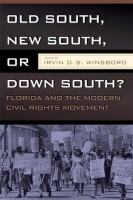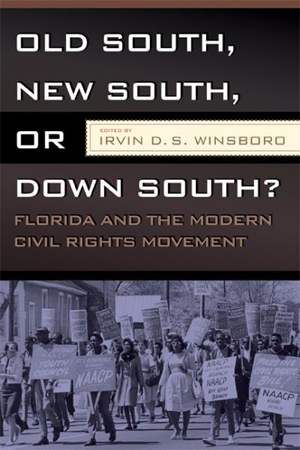 Editor: Irwin D.S. Winsboro
Editor: Irwin D.S. Winsboro
Contributors: Abel A. Bartley, Gregory W. Bush, Marvin Dunn, Leonard R. Lempel, Connie L. Lester, Paul Ortiz, Lise M. Steinhauer, and Amy Sasscer
Publisher: West Virginia University Press
Book Review by: Paiso Jamakar
Many casual readers and serious students as well, of the history of the American Civil Rights Movement (1955-68) seem to have formed the impression (without a close look at particular historical events) that Florida was more temperate in its relations with civil rights leaders than other southern states; that it was tolerant of, and did not resist, Blacks’ demands for equal rights.
But a new book by Irwin D.S. Winsboro reveals that in Florida also, like in other states, there was a long history of Blacks’ struggle for freedom, jobs, decent wages, and other rights. Essays contributed to this book by him and eight other historians “explode the myth of Florida as an ‘exceptional’ state noted for its ‘moderation’ in race relations…and show vividly the degree to which racism – and Black resistance – were as endemic to Florida as they were to Mississippi,” points out Winsboro.
It has been assumed for a long time that the Sunshine State was not as ‘radical’ as the other southern states that resisted the fight of Blacks for equality, Winsboro points out. But “this work presents new visions of Florida’s racial past and encourages new ideas about what civil rights meant to constituencies around the state and, possibly around the nation.”
Irwin D .S .Winsboro’s work corrects misconceptions about ‘moderation’ and addresses a “generally recurring assumption in both academic as well as popular discourse that Florida has always been more progressive in race relations than its southern neighbors. Such finite views are no longer justified. In addition to violence, the essays here demonstrate that White Floridians fought as hard as their Dixie neighbors to maintain segregated schools, communities and unequal political and employment opportunities…
“Although Florida often escaped the ugly national images of die-hard segregationists, the state was little more than accepting of racial progress than the more rabid states so ingrained in the popular mind of the 1950s and 1960s. Indeed the list of violent acts against civil rights activists in Florida is pervasive once one pierces the state’s veneer of genteel progressivism and regional exceptionalism.”
Marvin Dunn changes in chapter one, the ‘illusion of moderation’ in Florida – formed by scholars who have argued that the civil rights movement there was not violent – into a reality where “Blacks actually died in the Sunshine State as a consequence of White resistance to racial integration.”
Abel Bartley points out in chapter two of Florida’s ‘reality of its ugly racial heritage’- far contrast with its “carefully cultivated image of a racially moderate paradise with year-round sunshine, sandy beaches, and scenic palm trees.” She writes that Florida, like the rest of Dixie, was totally segregated wherein its “economic, political and social institutions were designed to maintain and preserve White supremacy.”
Leonard R. Ampel recalls in chapter four when he and his wife moved to Florida: “In Daytona Beach in 1980, the per capita income of African Americans was only 45 percent of Whites’ and the Black poverty rate stood at nearly 39 percent while that of Whites was only 15 percent. The Black business district to the Bethune-Bookman College, which had thrived during the Jim Crow era, lay decimated.”
Connie Lester writes in chapter five about the endurance of racial discrimination even as crucial legal decisions bestowing equal rights were promulgated and major laws were passed. She laments that “the road to equality did not begin in 1954 with the landmark Brown v. Board decision and it did not end in 1964 with the passage of the Civil Rights Bill.
She explains: “…White supremacy emerged from an agrarian paternalism that enforced strict racial inequality. The land tenure and labor arrangements characterized by sharecropping imposed a system historians describe as debt patronage.”
Lise M. Steinhauer quotes in chapter seven Dr. Martin Luther King Jr.’s lament in 1963: “ ‘Wait’ has almost always meant ‘Never’ ” when he exhorted Black civil rights workers and White elected officials to say ‘No’ to segregationists who used tactics to delay enacting the 1954 U.S. Supreme Court school desegregation order.
It took Palm County in Florida almost two decades to comply with that historic order, issued in to the Brown V. Board decision. King’s words proved to be prophetic, points out Steinhauer.
To get your history right about Florida’s involvement in the civil rights movement, get this book.







